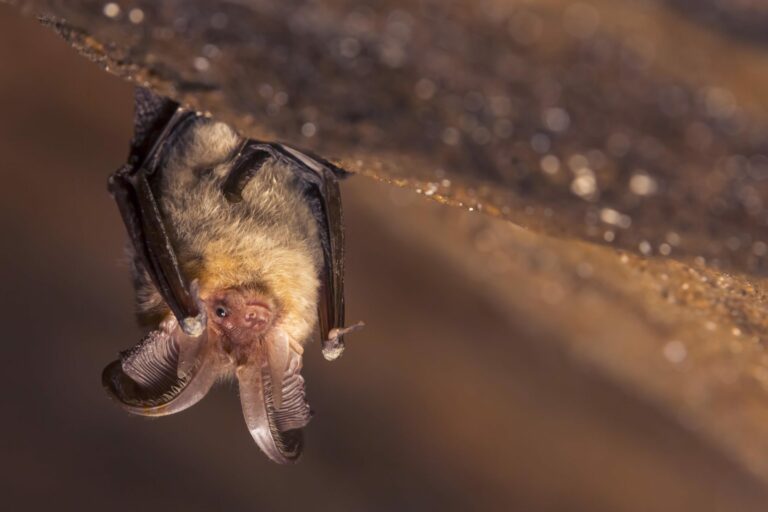Plecotus auritus

Plecotus auritus is a bat species of the Vespertilionidae family, which inhabits various types of forests and is also frequently found in urban areas. It hibernates in caves, tunnels, or cellars (Schaefer 2018). The Brown Long-eared Bat measures between 46-51 mm in size and weighs between 5-9.5 g, with a wingspan of up to 26.5 cm (Southern 1965). One distinctive feature compared to most other bat species in Europe is its long ears fused at the crown (Niederfriniger 2003). The back is brown to gray, while the belly is yellowish-brown to yellowish-white in color. Plecotus auritus is nocturnal, and reproduction occurs between October and November (Southern 1965).
Diet: The Brown Long-eared Bat primarily feeds on insects such as moths or beetles. Smaller prey is eaten directly in flight, while larger prey is carried to a resting place (Southern 1965).
Threat Status: According to Annex IV of the FFH Directive, the Brown Long-eared Bat is classified as “strictly protected” in Germany, and it is listed as “endangered” in the Red List of Germany.
-
Niederfriniger, O (2003)Zur Verbreitung der Fledermäuse (Chiroptera) in Südtirol (2): Glattnasen (Vespertilionidae). In: Gredleriana (3), S. 243–312.
-
Schaefer, M (2018)Brohmer – Fauna von Deutschland. Ein Bestimmungsbuch unserer heimischen Tierwelt: Quelle & Meyer Verlag GmbH & Co.
-
Southern, H (1965)Handbook of British mammals. Mammal society of the British isles. Unter Mitarbeit von Robert Gillmor und Erik Thorn: Blackwell Scientific Publications Oxford.